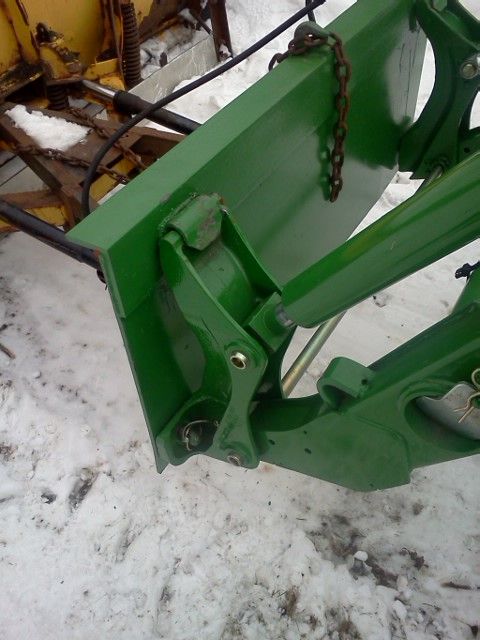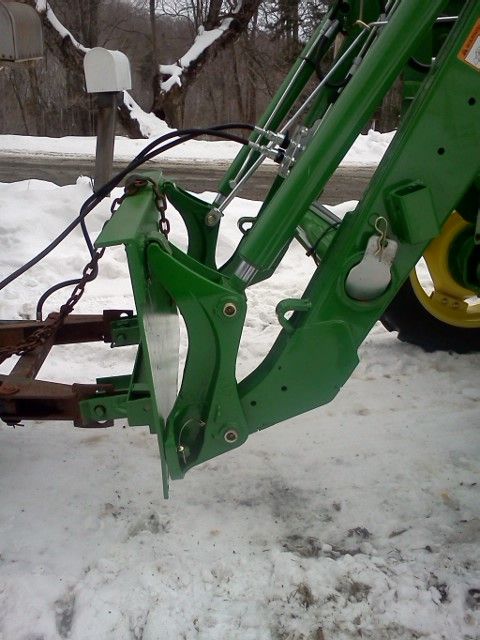When I was looking to buy a backhoe I found several that had the loader repaired. Most of them had non factory welds and plates added to them. The manuals always state do not ram into stuff with the loader.
For those who think the trip springs on a plow will always protect you think again. That I have proof of. About 4 years ago I hit a rock about the size of a watermelon on the side of the driveway that had froze in place. I was lazy and left it there in the fall thinking I would never plow that far off the drive. The problem is that we had lots of snow and I needed to push the banks back to prepare for an upcoming storm. My trip springs are set very weak, I have them that way so when the ground isn't frozen the blade will trip without digging in too much. I also plow in low gear at slow speeds.
When I hit the rock I bent one of the two angle cylinders (a 1 3/4" diameter rod), sheared one of the two 1" pivot pins, and bent the 3/4" steel plate with the hole for the other 1" pin. Now my plow truck is a 2 1/2 ton dump that weighs more than 10k and the plow is a 10' Western so there's plenty of weight to cause problems but the steel is a lot thicker. I still have the bent cylinder and I wasn't able to fully straighten out the plate. I was able to find a new old stock cylinder for under $100 on ebay (not much call for a angle cylinder that large) so it wasn't an expensive fix. But it did open my eyes. Damage to a loader would cost a heck of a lot more. Plus there's the wear to the pins in the loader.
Have I seen a damaged loader from plowing snow, no. But I also don't want the first one I see to be mine.



